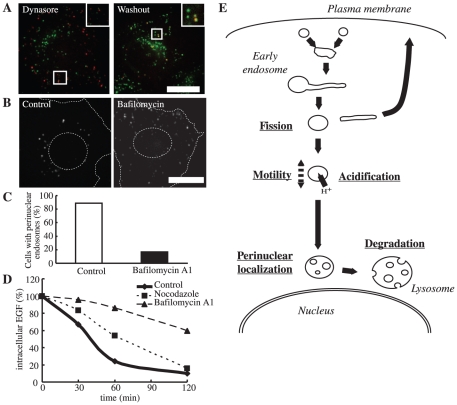Figure 5. Acidification is required for perinuclear localization of endosomes, and a cascade model of the degradative pathway.
A, HeLa cells were bound on ice with Alexa555-EGF, rinsed, and transferred to 37°C. After 5 min, dynasore was added. For washout, after 30 min the cells were rinsed and incubated in dynasore-free media. Images are just before washout (left) and 10 min after washout (right). B, HeLa cells were incubated with Alexa555-EGF on ice for 1 h, rinsed, and transferred to 37°C. After 5 min of internalization, DMSO (left) or Baf (right) was added and the cells were further incubated. After 30 min, the cells were fixed. Dashed-line circle, nucleus; Dashed-line (not circle), outline of the cell; Scale bar, 20 µm. C, The endosomes displaying perinuclear localization were manually counted. N = 80 cells. D, Cells were incubated with biotin-conjugated EGF on ice for 1 h. After rinsing, the cells were transferred to 37°C, incubated for the time indicated, and processed by ELISA. Nocodazole was added at 1 hour before the incubation, while bafilomycin A1 was added at 5 min after internalization. E, Both internalized EGF and transferrin initially enter the same early endosomes. EGF is sorted into vacuolar domains and unsorted transferrin is collected into tubules. After tubule fission, intraluminal acidification of EGF-containing endosomes proceeds, as endosomes are motile. As a result, enlarged endosomes are recruited around the nucleus and degradation is finally completed. Dynasore inhibits tubule fission, which blocks the subsequent steps. Bafilomycin A1 inhibits endosomal acidification and causes inhibition of perinuclear localization and degradation, but not of fission or motility. Nocodazole inhibits endosomal motility, resulting in impaired perinuclear recruitment and degradation, but normal endosomal acidification.

